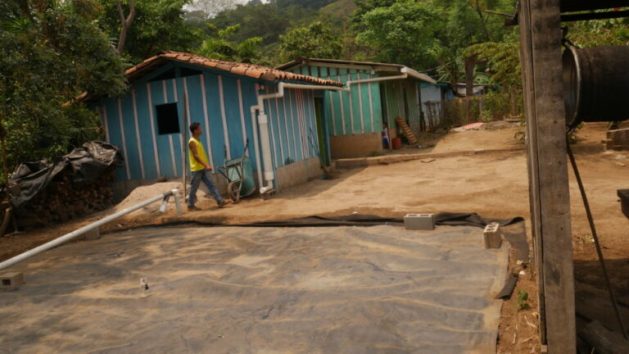
[ad_1]

SAN SALVADOR, Might 22 (IPS) – Continual water shortages make life more and more troublesome for the greater than 10.5 million individuals who reside within the Central American Dry Hall, an arid strip that covers 35 p.c of that area.
Within the Dry Hall, the dearth of water complicates not solely fundamental hygiene and family actions like bathing, washing garments or dishes, but in addition agriculture and meals manufacturing.
“This can be a very troublesome place to reside, as a result of lack of water,” mentioned Marlene Carballo, a 23-year-old Salvadoran farmer from the Jocote Dulce canton, a rural settlement within the Chinameca municipality, within the japanese El Salvador division of San Miguel.
The municipality is among the 144 within the nation that’s situated within the Dry Hall, the place greater than 73 p.c of the agricultural inhabitants lives in poverty and seven.1 million endure from extreme meals insecurity, in keeping with the United Nations Meals and Agriculture Group (FAO).
However poor rural settlements haven’t stood idly by.
The shortage of water has prompted group leaders, particularly girls, who are suffering the brunt of the scarcity, to prepare themselves in rural associations to advertise water initiatives.
Within the numerous villages in Jocote Dulce, rainwater harvesting initiatives, reforestation and assist for the event of small poultry farms have arrived, with the backing of native and worldwide organizations, and funding from European nations.
Rainwater harvesting relies on programs such because the one put in in Carballo’s home: when it rains, the water that falls on the roof runs by way of a pipe to an enormous waterproof bag within the yard, which features as a catchment tank that may maintain as much as 80,000 liters.
Different mechanisms additionally embrace plastic-lined rectangular-shaped holes dug within the floor.
The harvested water is used to irrigate household gardens, present water to livestock utilized in meals manufacturing similar to cows, oxen and horses, and even for aquaculture.
Comparable initiatives have been carried out in the remainder of the Central American nations that type a part of the Dry Hall.
In Guatemala, for instance, FAO and different organizations have benefited 5,416 households in 80 rural settlements in two departments of the nation.
© Inter Press Service (2023) — All Rights ReservedOriginal source: Inter Press Service
[ad_2]